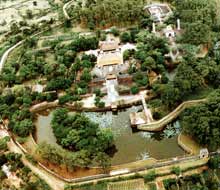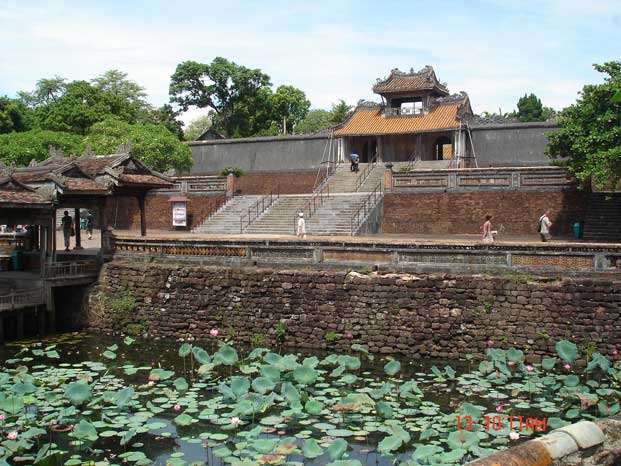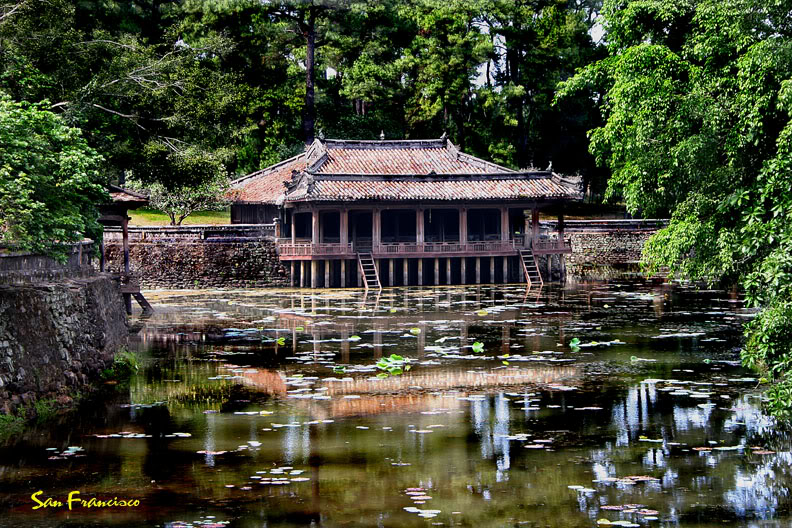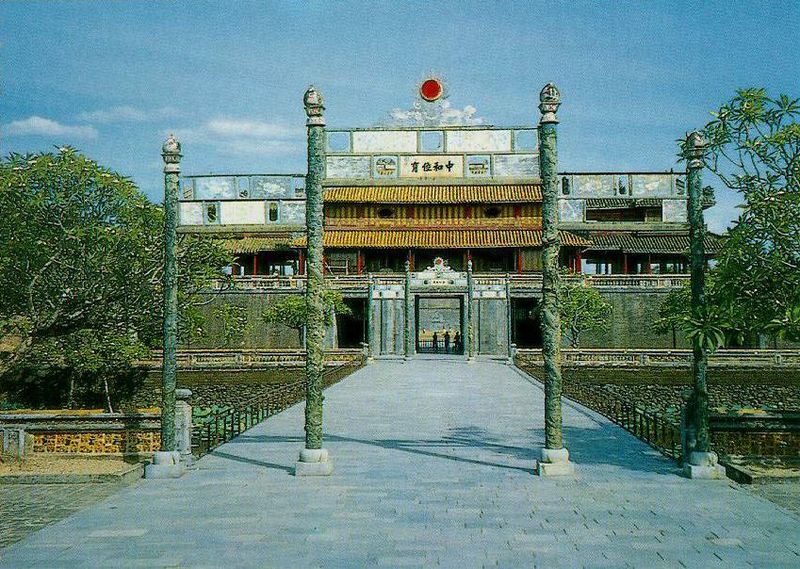Social Events
Hue city tour of AMSTA 2013 on 29th May, 2013
Visit to Tu Duc Emperor tomb
Tu Duc Emperor tomb:
 Tu Duc's tomb is located in a narrow valley in Duong Xuan Thuong village (currently Thuong Ba village, Thuy Xuan Commune, Hue City). It is one of the most beautiful works of royal architecture of the Nguyen dynasty. The tomb lies in a boundless pine forest, 8 km from Hue.
Tu Duc's tomb is located in a narrow valley in Duong Xuan Thuong village (currently Thuong Ba village, Thuy Xuan Commune, Hue City). It is one of the most beautiful works of royal architecture of the Nguyen dynasty. The tomb lies in a boundless pine forest, 8 km from Hue.
Its construction started in December 1864 and finished in 1867.
Inside the surrounding wall about 12 hectares wide, nearly 50 constructions were built on terraces of various levels (about 10m difference). All constructions include the word Khiem (Modesty) in their names.

The tomb is divided into two main parts:
The temple area:
Entering Vu Khiem entrance, there is Luu Khiem lake. On the lake are Xung Khiem Pavilion and Du Khiem Pavilion where the Emperor used to come to admire flowers, compose poems, read books, etc.
Then, three Thanh stone steps to Khiem Cung gate lead to Hoa Khiem Palace, which used to be the Emperor's working place, and is now the altar devoted to the Emperor and the Queen. On both sides are Phap Khiem House and Le Khiem House for the military and civil mandarins.
Behind Hoa Khiem Palace is Luong Khiem Palace, which was also the Emperor's resting place, and was later used to worship Mrs. Tu Du (Tu Duc's Mother). On the right of Luong Khiem Palace stand On Khiem Palace, where the royal utensils are kept. On the left of Luong Khiem Palace is Minh Khiem theatre. Then, comes Chi Khiem, the altar to worship the Emperor's wives, Tri Khiem Palace and Y Khiem Palace were the accommodations of the Emperor's concubines.
The tomb area:
On the left of the temple is the necropolis itself slopping upward with the Honour Courtyard, the Stele Pavilion, and the seplucre. Rightbehind Bai Dinh (Honour Courtyard), with two rows of magnificent military and civil mandarins, is Bi Dinh (Stele Pavilion) with the biggest stone stele in Vietnam. It is inscribed with Khiem Cung narrative, composed by the Emperor himself, writing about his life and imperial cause as well as his misadventures and diseases, etc. On the hill, opposite the semi-circular Tieu Khiem Tri lake, is the Buu Thanh brick wall, in the middle is a stone house, where the Emperor was buried.

Tu Ducís tomb is not only one of the most beautiful works of the Nguyen dynasty, but it is also a romantic scenery of mounts and lakes.
More Information: Hue capital city and World cultural heritage:

The fact that the Nguyen Dynasty selected Hue as its capital and invested in construction during one and a half centuries has left Hue city with a voluminous cultural heritage.
This includes material architecture with a complex of splendid and luxurious palaces, mausoleums, citadel and ramparts, temples and others. Moreover, an intangible heritage, consisting of precious spiritual sources, habits and customs, festivals, art branches, and traditional handicrafts, which were constructed by the great effort of generations, has given Hue city a salient and specific value, as well as its own unique identity.

This romantic land area has had to undergo many fierce wars and severe impacts of environment and climate. Consequently, the Hue monument complex was once seriously degraded. In a visit to Hue in November 1981, the General Director of UNESCO, Mr. Amadou Mahtar M'Bow had to appeal for 'saving Hue' with words from the bottom of his heart, "Hue, where the national culture identity is apparent, must be saved for Vietnam and the world because Hue is a component of mankind's cultural heritage". Many positive action programs have been implemented by Hue-UNESCO Workgroup and the Vietnamese authorities, in order to gradually restore and preserve the Hue monument complex since that appeal was put forth. The efforts made in the following twelve years have brought a happy result; namely that the Hue Ancient Capital City was listed in the world cultural heritages by the World Heritage Council in December 1993. It is written: "Hue's monument complex is a typical example of the urbanization and architecture of a defensive capital. It shows the power of Vietnam's ancient feudal kingdom in the splendid age of the 20th century." Hue's monument complex has become the 410 th heritage site in the list of world heritages.



